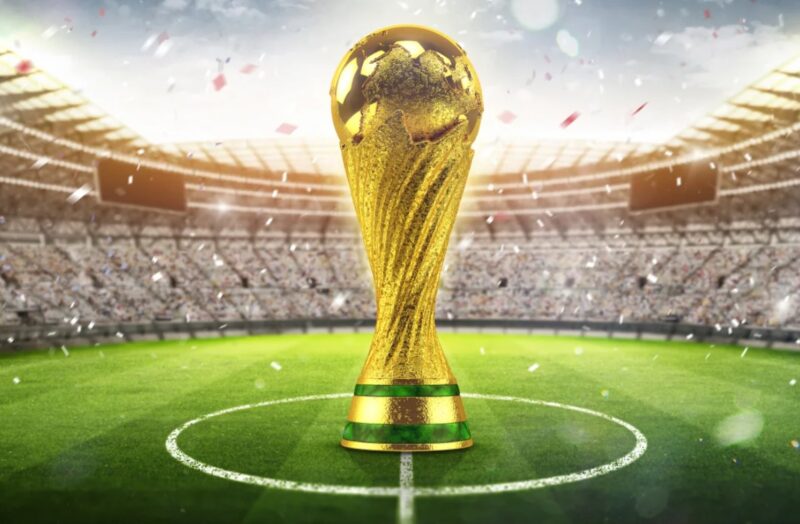The 2019 World Cup is just around the corner, and many are wondering if it will be a success. FIFA president Gianni Infantino has proposed that the World Cup should be held every two years, with an expanded 32-team tournament in between. This would require significant changes to the current format of the World Cup.
The FIFA world cup winners is a plan that has been put forward by FIFA chief Arsene Wenger. It would see the World Cup held every two years, with the top four teams in each tournament qualifying for the following edition.
Imagine a world where a big international event takes place every year. You may be surprised to learn that the concept is closer to becoming a reality than you believe.
2 Related
FIFA is conducting a feasibility study into the practicalities of changing the World Cup cycle from four to two years, meaning continental championships (such as the Gold Cup, European Championship, and Copa America) would be sandwiched in the alternate years, following a proposal by the Saudi Arabian Football Federation in May. Former Arsenal manager Arsene Wenger (now FIFA’s Chief of Global Football Development) is leading the study, which has received support from 166 of FIFA’s 210 member associations.
However, there is opposition. Last week, UEFA president Aleksander Ceferin expressed his disapproval, but the big leagues have yet to be polled and persuaded. However, in an interview with L’Equipe over the weekend, Wenger explained the reasoning for the idea to not only enhance the frequency of World Cups, but also to redraw the international calendar to fit all aspects of the game.
It would imply more big tournaments but fewer international breaks, more chances for countries to host World Cups, and fewer international fixtures for clubs.
So, what does it all imply, and what are the advantages and disadvantages of Wenger’s international blueprint?
– Stream LIVE games and replays of Globe Cup qualifiers on ESPN+ (US) – How 2023 World Cup qualifying works across the world
WHY IS THERE A PLAN FOR BIENNIAL WORLD CUPS AT ALL?
Gianni Infantino, the president of FIFA, wants larger World Cups (the 2026 finals in the United States, Mexico, and Canada will be the first 48-nation tournament), as well as the international game to regain some of the financial power, marketing influence, and prestige that the club game has.
World Cups every two years, with regional championships in between, would provide a consistent, yearly space in the football calendar for the international game to take center stage.
Within FIFA, there is also a belief that the four-year World Cup cycle is an outmoded paradigm, an anachronism in a world dominated by social media and 24-hour news, and that younger viewers and sponsors want more high-quality events rather than having to wait four years for the next World Cup.
Many countries, including Saudi Arabia, are interested in hosting a World Cup. By holding one every two years, FIFA would be able to clear the backlog of countries such as China, England, Morocco, Spain, and Argentina, who would otherwise have to wait decades to host a World Cup on their own territory.
While Wenger’s research is centered on the men’s game and decongesting the calendar, there are also proposals to have a biannual World Cup for women’s football. “We don’t want to follow in the footsteps of the males. We’d want something unique for ladies and the women’s game “In 2023, Infantino said. “We’ve got to get those creative juices flowing,” says the group.
ISN’T THERE A LOT OF OBJECTIONS TO THE PLAN?
Yes, most notably from UEFA. According to ESPN, the UEFA leadership views the proposal as little more than a ploy to limit Europe’s influence in the global game.
UEFA president Ceferin expressed his “grave worries” about the plan in a letter to Football Supporters Europe (FSE) over the weekend, accusing FIFA of starting a “public relations campaign” without consulting confederations or national leagues.
European football is the world’s superpower, with the top local leagues, wealthiest clubs, and the Champions League all giving UEFA significant clout. Next year will mark the 20th anniversary of the last time a non-European country won the World Cup (Brazil in 2002).
However, the growing financial dependence of major European teams on Asian sponsors and owners, particularly Qatar, the United Arab Emirates, and China, as well as the United States, has altered the power balance and allowed FIFA to rally support for a dramatic revamp of the international schedule.
The research has the backing of the African Confederation (CAF), and there is increasing support in Asia, so UEFA is in for a fight.
Arsene Wenger, the former Arsenal manager, is in charge of the preparations. Getty Images/Edward Berthelot
WENGER’S BLUEPRINT HAS KEY ELEMENTS. WHAT ARE THEY?
Wenger thinks that increasing the frequency of World Cups will eventually improve all areas of the game.

This is where the lovely game resides. Unlock premium coverage of the world’s best leagues, events, and teams. To watch soccer on ESPN+, sign up today.
• Uzbekistan vs. Sweden, SUNDAY, SEPTEMBER 5 (8:50 a.m. ET) • Spain takes on Georgia (2:35 p.m. ET) • Italy vs. Switzerland (2:35 p.m. ET) • Czech Republic vs. Belgium (2:35 p.m. ET) • Poland vs. San Marino (2:35 p.m. ET) • Armenia against Germany (2:35 p.m. ET) • Egypt vs. Gabon (2:55 p.m. ET)
He proposes two international breaks in March and October, with four-nation groups playing just six qualifying games, which Wenger thinks would result in “more high-stakes and high-emotion games.”
Because the plans are still in the works, there isn’t much information about how those four-team groups would be put together, but it appears that minnows like Andorra, San Marino, and Gibraltar would have to pre-qualify, as lower-ranked nations in Africa, Asia, and North/Central America have done for years.
Wenger believes that a tournament’s “beauty and grandeur” are determined by its quality rather than its frequency, and that playing every two years will provide the globe with high-quality international matches and memorable events.
He thinks that by having just two international breaks per year, top clubs would be able to reap the benefits of having their players for longer periods of time and with fewer disrupted game schedules. He’s also suggesting that players be required to take a 25-day break following international events.
DOESN’T APPEAR TO BE VERY WORKABLE, DOES IT?
When you add in a 25-day vacation following a four-week summer competition, players are away from their clubs for almost two months. When you consider that the top teams all go on lucrative preseason friendly trips before to the COVID 19 tournament, there is a clear area of conflict between club and nation before the competitive action ever begins.
In theory, cutting international breaks to two per year sounds wonderful, but can a World Cup qualifying campaign be reduced to only six games? UEFA has 55 member countries, but even in a 48-team World Cup, only 16 are expected to compete, thus 14 qualifying groups would be required if Andorra and San Marino were included.
If that were the true, the big countries would have some extremely unchallenging groups and fewer of the “high stakes/high emotion” games that Wenger thinks are required.
With 54 member countries and just nine places in a 48-team World Cup, the math in Africa’s qualifications would be much more difficult. Meanwhile, South America will have six qualifiers from ten member countries, meaning their qualifying campaign may be finished after only a few games.
play
1:50
Gab Marcotti explains what occurs when the match between Brazil and Argentina is called off due to health concerns raised by three Argentina players.
IS THE INTERNATIONAL GAME, ON THE OTHER HAND, IN NEED OF REFORM?
The World Cup remains the pinnacle of the game, and it would be rare to find a player who would choose to win the Champions League over hoisting the World Cup, but international football is battling to stay relevant and exciting outside of the big tournaments.

Mark Ogden, senior writer for ESPN FC, has all the latest news and reactions.
Even though England defeated Andorra – who are rated 156th in the world – 4-0 at Wembley on Sunday with a virtual second string chosen by manager Gareth Southgate, almost 67,000 supporters came out to witness. Even when gate revenues and television money are factored in, even the most powerful associations will prefer to play games with little or no competitive advantage simply for financial reasons.
There hasn’t been a World Cup qualifying loss for England since 2009, and Spain’s loss to Sweden last week was their first in the format since 1993, indicating that there is a glaring problem with competition throughout the qualifiers. Continental heavyweights continue to lose out on World Cups — the Netherlands, Italy, and the United States all failed to qualify for the 2018 tournament in Russia — but this may be due to unbalanced groupings or a poor campaign. But, all too frequently, the qualifiers can be anticipated before a single ball is played.
So, adding pre-qualifiers for the lower-ranked teams and creating more competitive groupings may be the way to go. But how many organizations will vote for fewer fixtures and groupings that make qualifying more difficult?
ARE THERE ANY BENEFITS TO WENGER’S PLAN?
Yes. Few fans, players, sponsors, or broadcasters would turn down a World Cup every two years for the spectacle and excitement. Traditionalists may argue that holding the tournament every two years dilutes the game’s significance, and clubs may have their own concerns, but football is ultimately about entertainment and glory. Both are abundantly available during the World Cup.
Increased World Cup frequency would also aid in resolving the political and geographic issue of properly sharing hosting rights.
Africa has only hosted one World Cup, in 2010 in South Africa, while Morocco has attempted and failed to host the event five times. The Premier League hasn’t been held in England since 1966, and Argentina, Uruguay, and Chile are eager to bring it back to South America for the first time since 1978.
Even if FIFA agreed today on a four-year cycle with Morocco, England, Argentina, China, and Australia, it would be 2046 before Sydney, Melbourne, and Adelaide had a chance to be seized by World Cup fever.
Too many nations who are ready and capable of hosting a World Cup are still waiting, so a two-year cycle would guarantee a genuinely worldwide distribution of events in the coming years.
WHEN WILL ALL OF THIS BE DECIDED?
Wenger, who began his research in May, has indicated that it might all be settled by December, but it seems to be a lofty goal, especially given the likelihood of strong resistance from UEFA, as well as the major leagues and leading clubs.
The international schedule is already fixed all the way up to the 2026 World Cup, therefore no changes will be made until at least 2028, when UEFA will host Euro 2028. So, practically, a new biennial World Cup cycle is unlikely to begin until 2030 (the tournament’s centennial), and the earliest it might be voted on is at the FIFA Congress in 2023.
It’s a touchy topic, but one that’s gaining traction, and UEFA may find itself outflanked on this one. Football is a dynamic sport, and as Wenger puts it, “we must foresee the future.”
Related Tags
- arsene wenger
- who won the world cup 2018
- brazil world cup wins


